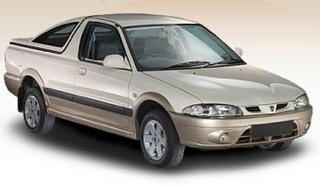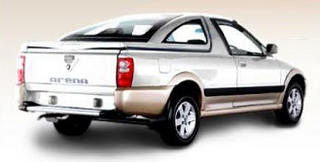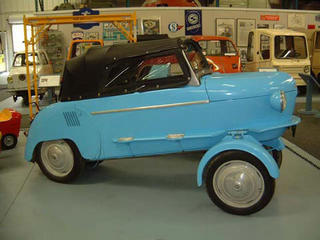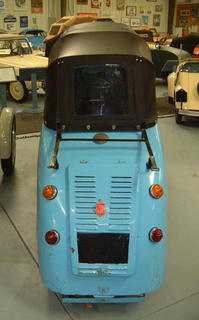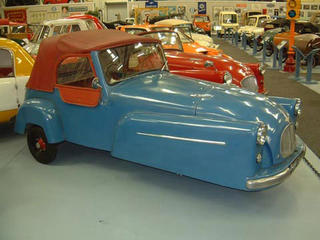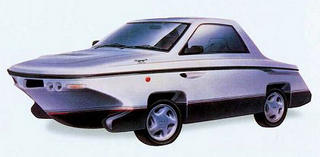In continents other than truck happy North America, heavy hauling duties are usually carried by car-based vans and trucks - usually in commercial applications. They're basically cars with either a bed or a cargo van type extension, and all usually seem to be based on the companies cheapest offerings. Australia has taken this idea to a whole other extreme, with a fullsize car range of "utes" that can even be had in performance versions.
Malaysian Proton (for those not in the know, they are only now branching off from Mitsubishi based offerings) is now marketing this previously commercial only vehicles for the public. Behold - the Proton Arena, whose models include the Freestyle, the Sportdeck and the Fastback.
http://www.proton2020.com/arena.asp#
However, the Proton Arena Fastback gets a mention on the site because it's such a bizarre piece of machinery. Basically, it's a car that looks like a truck, that looks like a car. It's basically a car based truck with a tonneau cover that contains a glassed-in compartment to give it a fast-back look - and basically giving the impression of a car with a huuuuge trunk. Why someone who buy this instead of an actual car, I don't know. It severely limits the useablity of a bed, and if you want it to look like a car, buy the car version on which it is based.
Right from the site:
"A 2-in-1 vehicle for individualistic style in both business and leisure, the Proton Arena can be defined as a truck with a car-like driveability or a car with truck-like versatility! A multi-purpose passenger car which facilitates the transportation of goods summarises its unique character."